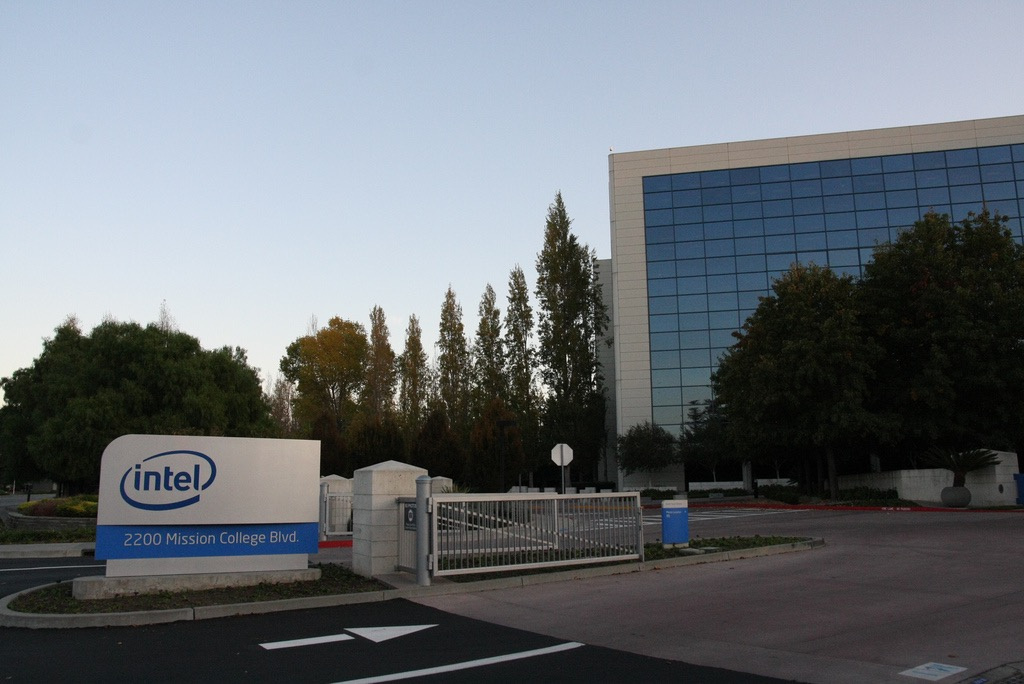AMD is preparing to push Intel in the server market
This summer, AMD announced their triumphant return to the enterprise high-performance computing sector. With the announcement of new processors based on EPYC family of architectural solutions, AMD is going to push Intel in the field of equipment for data centers.
 / Photo / twin-loc.fr / CC BY-SA
/ Photo / twin-loc.fr / CC BY-SA
The main opponent of EPYC chips on the new battlefield are Intel's Skylake processors. The company dominates the market for processors used by large enterprises in the field of cloud computing, as well as companies with their own infrastructure. The launch of the Xeon Skylake line of processors, Navin Shenoy, head of the data center group at Intel, called "the most important announcement for the data center industry in a decade."

/ Photo / Kazuhisa OTSUBO / CC BY-SA
Despite this, a number of IT industry participants, such as Kurt Marko, assurethat Intel’s century of undivided power is drawing to a close: cloud services have begun to crowd out local infrastructure, and the company's double-digit financial growth has halved in recent quarters.
At the same time, testing of new products from two competitors showed that the EPYC chip has a number of unexpected advantages in terms of performance for data centers compared to Intel's Xeon.
Intel has integrated the 512-bit x86 command system extension (AVX-512) into its new scalable Xeon Skylake platform, which theoretically doubles the integer-based FLOPS and performance compared to the previous version of Xeon. AMD decided to rely on 128-bit vectors, which at first glance puts EPYC at a disadvantage. However, it should be borne in mind that in most high-performance computing, the AVX-512 is not currently used.
The team from Anandtech conducted testing of new products with the use of software C-ray, POV-Ray, NAMD and others. Testing was conducted on dual-processor servers running Ubuntu Linux.
The EPYC processor outperformed the Xeon in all three floating-point tests. In C-ray, when rendering for a given period of time, EPYC 7601 got a 50% better result than Xeon 8176. In the POV-Ray test, the advantage was 16%. For NAMD, Anandtech tested two methods: with AVX and without AVX. In both cases, the EPYC processor stepped forward - by 22% and 41%, respectively.
It is worth noting that Anandtech also conducted the BigData test, in which the gap between Xeon and EPYC was slightly less than 5%. In this case, the processors passed tests that evaluated the performance of integer calculations and memory access.
When comparing Xeon 8176 and EPYC 7601, one should not lose sight of their cost. Here, AMD has the added potential of weakening Intel's market position.
In the IT community, opinions about AMD returning to the corporate sector were divided. Some of them were not very optimistic. For example, on July 18, the company's shares fell 3.2% due to a negative assessment of AMD's prospects in competition with Intel. Barclays analyst Blayne Curtis concluded that the new product will be "not competitive enough."
He said they managed to capture some interest from companies such as HP and Dell, but it would take at least a year to evaluate the new chips. Provided that AMD does not have an ecosystem.
AMD understands this, so Scott Aylor, AMD Corporate Vice President and Corporate Solutions Leader, emphasizedthat the company is not enough to provide only one product, it is important to offer customers prospects for the future.
Therefore, AMD claimed responsibility for socket compatibility between EPYC 7000 and Rome. The latter is the code name for the new next-generation AMD processor for data centers. At the same time, Aylor is convinced that EPYC will be able to compete with Skylake for 50% of the dual-socket processor market.

/ Photo / AMD Markham Canada / CC BY-SA
This situation has resonated with other IT companies. AMD supportedGirish Bablani, corporate vice president of Microsoft Azure Compute, Zhang Ya Qin, president of Baidu, and Ashley Gorakhpurwalla, president of Dell EMC Server Solutions. They made it clear that companies are ready to opt for new EPYC architectural solutions.
As for Intel's displacement from its position in the data center segment, even AMD employees are still modest in forecasts, however, as Dave Altavilla from Forbes notes , even a 10 percent share will bring AMD billions in a new highly profitable business.
PS Other articles on performance on our blog:
 / Photo / twin-loc.fr / CC BY-SA
/ Photo / twin-loc.fr / CC BY-SACompetitive advantage
The main opponent of EPYC chips on the new battlefield are Intel's Skylake processors. The company dominates the market for processors used by large enterprises in the field of cloud computing, as well as companies with their own infrastructure. The launch of the Xeon Skylake line of processors, Navin Shenoy, head of the data center group at Intel, called "the most important announcement for the data center industry in a decade."

/ Photo / Kazuhisa OTSUBO / CC BY-SA
Despite this, a number of IT industry participants, such as Kurt Marko, assurethat Intel’s century of undivided power is drawing to a close: cloud services have begun to crowd out local infrastructure, and the company's double-digit financial growth has halved in recent quarters.
At the same time, testing of new products from two competitors showed that the EPYC chip has a number of unexpected advantages in terms of performance for data centers compared to Intel's Xeon.
Intel has integrated the 512-bit x86 command system extension (AVX-512) into its new scalable Xeon Skylake platform, which theoretically doubles the integer-based FLOPS and performance compared to the previous version of Xeon. AMD decided to rely on 128-bit vectors, which at first glance puts EPYC at a disadvantage. However, it should be borne in mind that in most high-performance computing, the AVX-512 is not currently used.
The team from Anandtech conducted testing of new products with the use of software C-ray, POV-Ray, NAMD and others. Testing was conducted on dual-processor servers running Ubuntu Linux.
The EPYC processor outperformed the Xeon in all three floating-point tests. In C-ray, when rendering for a given period of time, EPYC 7601 got a 50% better result than Xeon 8176. In the POV-Ray test, the advantage was 16%. For NAMD, Anandtech tested two methods: with AVX and without AVX. In both cases, the EPYC processor stepped forward - by 22% and 41%, respectively.
It is worth noting that Anandtech also conducted the BigData test, in which the gap between Xeon and EPYC was slightly less than 5%. In this case, the processors passed tests that evaluated the performance of integer calculations and memory access.
When comparing Xeon 8176 and EPYC 7601, one should not lose sight of their cost. Here, AMD has the added potential of weakening Intel's market position.
The struggle for market share
In the IT community, opinions about AMD returning to the corporate sector were divided. Some of them were not very optimistic. For example, on July 18, the company's shares fell 3.2% due to a negative assessment of AMD's prospects in competition with Intel. Barclays analyst Blayne Curtis concluded that the new product will be "not competitive enough."
He said they managed to capture some interest from companies such as HP and Dell, but it would take at least a year to evaluate the new chips. Provided that AMD does not have an ecosystem.
AMD understands this, so Scott Aylor, AMD Corporate Vice President and Corporate Solutions Leader, emphasizedthat the company is not enough to provide only one product, it is important to offer customers prospects for the future.
Therefore, AMD claimed responsibility for socket compatibility between EPYC 7000 and Rome. The latter is the code name for the new next-generation AMD processor for data centers. At the same time, Aylor is convinced that EPYC will be able to compete with Skylake for 50% of the dual-socket processor market.

/ Photo / AMD Markham Canada / CC BY-SA
This situation has resonated with other IT companies. AMD supportedGirish Bablani, corporate vice president of Microsoft Azure Compute, Zhang Ya Qin, president of Baidu, and Ashley Gorakhpurwalla, president of Dell EMC Server Solutions. They made it clear that companies are ready to opt for new EPYC architectural solutions.
As for Intel's displacement from its position in the data center segment, even AMD employees are still modest in forecasts, however, as Dave Altavilla from Forbes notes , even a 10 percent share will bring AMD billions in a new highly profitable business.
PS Other articles on performance on our blog:
